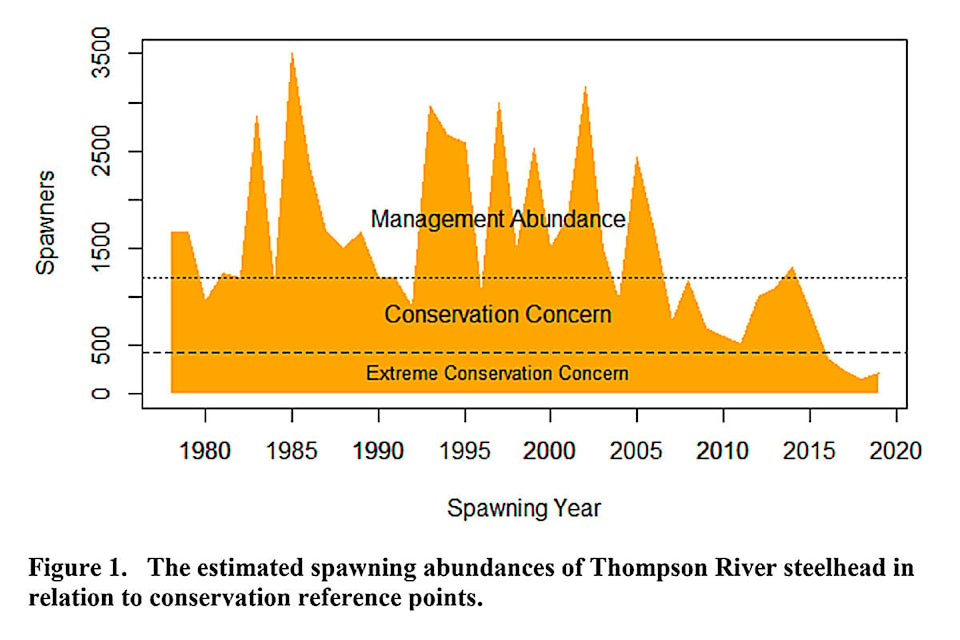As the population of Interior Fraser steelhead trout continues to reach near-record-low levels, the provincial and federal governments have announced a plan to work together to save the fish from extirpation.
The plan is made up of three new conservation measures, including work to reduce mortality and increase survival of fish returning to spawn, improve freshwater habitat conditions and conduct more science and monitoring activities.
The July 11 announcement stopped short of placing steelhead on the endangered list, something advocates and advisory panels have long supported.
“It’s lip service. We’ve done this stuff numerous times before,” said Bob Hooton, a retired fisheries biologist who worked for the provincial government for 37 years.
Hooton said at this point, there is only one course of action that would make a difference.
“The only immediate action we can take is to reduce the harvest pressure. We can talk all we want about sea lions, nets — no. We need to leave the damn fish alone long enough to see if they can respawn,” he said.
“Stop fishing. End of discussion.”
In 2018, the Committee on the Status of Endangered Wildlife in Canada (an advisory body to the government) assessed the Thompson River and Chilcotin steelhead as endangered and recommended an emergency order to place the fish on the endangered list under the federally controlled Species at Risk Act (SARA), which would stop fishing from recreational, commercial and First Nations sectors.
A Fisheries and Oceans Canada press release said the federal government determined that an emergency listing would “produce suboptimal ecological, social and economic outcomes relative to a comprehensive, long-term collaborative action plan with British Columbia.”
Hooton said the recreational fisheries sector has been regulated “off the map” and has little lobbying power, while commercial still retains some, but is dwindling.
“And then there’s First Nations. Nobody can say ‘No’ to First Nations anymore,” Hooton said.
Political motivations are what’s stopping the fish from being protected under SARA, according to Hooton.
But whatever the cause, a recent status report completed by ministry fisheries biologist Robert Bison shows the fish is still at risk of being extirpated.
The latest report from the province was released on July 10 and indicates a springtime population of 216 fish in the Thompson River, the second-lowest ever recorded since monitoring began in 1978. The lowest estimate was 150, made in the spring of 2018.
The population is deemed to be of “extreme conservation concern” if its population falls below 430.
The estimated number of fish is also noted by tributary, with 43 fish in the Deadman River, 37 in the Bonaparte River, 74 in the Coldwater River, 50 in the Spius River and 12 in the Lower Nicola River (including tributary creeks).
The numbers are just as dire for the Chilcotin, where an estimated 120 fish were located, also the second lowest population seen in that river since its records began in 1972.
“They’re practically extirpated now,” Hooton said.
